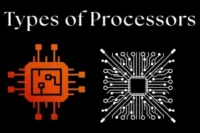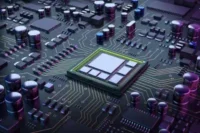Different Types of Batteries
Published: 11 Aug 2025
Batteries are an essential part of our daily lives. Batteries power devices when there is no direct source of electricity, such as your mobile phone, laptop, TV remote, or car. They store and release energy as needed, making them extremely useful and convenient. As technology advances, so does our reliance on batteries, which now come in a variety of sizes and capacities. However, with numerous options available, selecting the right one can be a challenging task.
This article will guide you through the various types of batteries, their working principles, how to select the best one for your needs, and how to avoid common mistakes when purchasing them. If you’re also curious about how these batteries fit into modern portable devices, check out our detailed guide on the Types of Laptops to better understand their applications.
What is a Battery?
A battery is a device that stores chemical energy before converting it into electrical energy. It provides power to electronic devices without the need for constant plugging into an outlet. A chemical reaction occurs between a battery’s two terminals: the positive terminal (called the cathode) and the negative terminal (called the anode).
This reaction produces an electric current, which flows through a connected device and powers it up. Batteries are used in a wide range of devices and machines, from small items like wristwatches and flashlights to larger systems such as cars and backup power supplies. In short, a battery is a portable source of energy, and in some cases, it works alongside renewable systems such as those using different types of solar panels for efficient energy storage.

Types of Batteries
Batteries are available in various forms, each tailored to a specific application. Different types of batteries serve multiple functions, ranging from powering small gadgets to running large vehicles and systems. Here’s a comprehensive list of the main battery types:
1. Zinc-Carbon Battery
Zinc-carbon batteries are another type of primary battery found in low-drain devices such as flashlights and inexpensive toys. They are less powerful and cost less than alkaline batteries. They do not last long, but are suitable for temporary or backup use. These are often found in low-cost devices.
2. Alkaline Battery
Alkaline batteries are non-rechargeable and very common in homes. They are used in devices like remotes, clocks, and toys. These batteries are affordable and have a long shelf life. They come in sizes like AA, AAA, C, and D.
3. Lithium Battery
Lithium batteries are non-rechargeable and known for their high energy content and long shelf life. They are commonly found in small electronics such as watches, calculators, and medical devices. These batteries work well in both hot and cold temperatures. They cost more than alkaline, but they last longer.
4. Lithium-Ion (Li-ion) Battery
Li-ion batteries are rechargeable and commonly found in smartphones, laptops, and power banks. They are lightweight, have a high charge, and recharge quickly. They also have a longer lifespan than other rechargeable batteries. Overcharging or overheating can harm them, so smart charging is recommended.
5. Lithium-Polymer (Li-Po) Battery
Li-Po batteries are a type of lithium battery that has a flexible pouch rather than a rigid casing. They are lightweight and commonly used in drones, RC toys, and slim gadgets. These batteries charge quickly but are sensitive to overcharging. They provide greater shape flexibility than standard Li-ion batteries.
6. Nickel-Cadmium (NiCd) Battery
NiCd batteries are rechargeable and were once widely used. They are long-lasting and capable of delivering powerful bursts of power, making them commonly used in cordless tools. However, they suffer from the “memory effect,” which reduces capacity over time. They are also harmful to the environment because they contain cadmium.
7. Nickel-Metal Hydride (NiMH) Battery
NiMH batteries are improved versions of NiCd batteries. They provide more capacity and are safer for the environment. These batteries, which are widely used in cameras, toys, and flashlights, are rechargeable and inexpensive. They do self-discharge faster, so regular use is ideal.
8. Lead-Acid Battery
Lead-acid batteries are heavy-duty rechargeable batteries used in cars, trucks, and UPS systems. They provide a large amount of power and are cost-efficient for high-drain applications. However, they are bulky and require maintenance in some cases. They must be adequately recycled due to their toxic content.
9. Silver-Oxide Battery
Silver-oxide batteries are small, non-rechargeable batteries characterized by high energy density and long lifespan. They are most commonly found in wristwatches, hearing aids, and medical equipment. These batteries are reliable and stable, but they are more expensive. They provide a consistent voltage until the battery dies.
10. Flow Battery
Flow batteries store energy in liquid form and are used for large-scale power storage, such as in solar energy systems. They are rechargeable and suitable for long-term energy backup. They are not commonly used in everyday devices due to their size and cost. Ideal for industrial or grid-scale storage.
11. Solid-State Battery
Solid-state batteries utilize solid materials instead of liquid electrolytes, making them safer and more energy-dense. They are still being developed for commercial applications. These batteries are intended to power future electric vehicles and devices. They have a low fire risk and a long lifespan.
12. Sodium-Ion Battery
Sodium-ion batteries are a more recent alternative to lithium-ion batteries. They are made from abundant materials and are more affordable. Despite being slightly heavier, they perform well in cold weather. These are being tested for use in electric vehicles and solar systems.
How to Choose the Right Battery
The correct battery depends on your requirements. Using the wrong battery can damage your device or cause poor performance. Here are some easy tips to help you choose the right one:
1. Check Device Compatibility
Ensure the battery matches the size (AA, AAA, etc.) and voltage required by your device. Always check the label or manual.
2. Look at Battery Capacity (mAh or Ah)
Higher mAh means longer battery life.
- For example, a 2000mAh battery will last longer than a 1000mAh battery in the same device.
3. Choose Between Rechargeable and Non-Rechargeable
- If you plan to use the battery frequently (such as in a toy or camera), opt for rechargeable.
- For low-use devices (like a clock or remote), non-rechargeable is fine.
4. Go for Trusted Brands
Avoid buying from unknown, low-cost brands. They might leak, overheat, or die quickly. Brands like Duracell, Panasonic, Energizer, and Sony are well-known for their reliability.
5. Think About the Environment
Rechargeable batteries are better for the environment because they can be reused. Also, check if the battery is recyclable.
Common Mistakes to Avoid When Buying a Battery
Many people make mistakes when buying batteries. These mistakes can cost you money — or damage your device. Let’s look at the top mistakes to avoid:
- Choosing Based on Price Only: Cheaper isn’t always better. Low-cost batteries may not last long or might be unsafe.
- Buying Fake or Duplicate Brands: Many counterfeit batteries resemble genuine ones. These are often unsafe and frequently malfunction.
- Picking the Wrong Size or Type: Always double-check the type and size before making a purchase.
- Overcharging Rechargeable Batteries: Don’t leave rechargeable batteries plugged in for too long. It can reduce battery life or cause overheating.
- Ignoring the Manufacturing Date: Batteries lose power over time, even when unused. Always check the manufacturing date before you buy.
Conclusion
Batteries play a vital role in our daily lives, from small gadgets to large machines. With numerous options available, including alkaline, lithium-ion, NiMH, lead-acid, and others, it’s essential to understand which one is best suited for your device and usage. Each battery has unique strengths, a lifespan, and an optimal application.
Understanding the various types of batteries allows you to make better purchasing decisions, save money, and avoid common mistakes. Whether you need a rechargeable battery for everyday use or a long-lasting non-rechargeable battery for emergencies, making the right choice can improve your device’s performance and safety.
Always check compatibility, choose trusted brands, and handle batteries with care. Don’t forget that recycling used batteries also benefits the environment.
Frequently Asked Questions [FAQs]
Let’s clear up the most common questions people have about different types of batteries:
Batteries are divided into two types: primary (non-rechargeable) and secondary (rechargeable). Primary batteries, such as alkaline, zinc-carbon, and lithium, are commonly used in remotes, toys, and clocks. Secondary batteries that can be recharged include lithium-ion, Li-Po, NiMH, and lead-acid, which are used in phones, laptops, and vehicles. Each type is appropriate for a variety of devices, depending on their power requirements, usage, and cost.
Alkaline batteries are great for daily-use devices like remotes and toys because they have a long shelf life and are affordable. For longer-lasting power, lithium batteries are better, but they cost more.
Both are rechargeable, but Li-ion batteries have a rigid casing and are commonly used in phones and laptops. Li-Po batteries are lighter and more flexible than traditional batteries, and they are used in devices such as drones and remote control toys
Not always. Rechargeable batteries are ideal for devices that you use frequently, such as cameras and toys. Non-rechargeable batteries (such as alkaline) are more convenient and cost-effective for low-use items such as clocks and remote controls.
A 3V battery is a small, non-rechargeable coin-shaped battery commonly found in watches, remotes, calculators, and motherboards. The most common type is the CR2032, which is known for its long lifespan and consistent power. It’s ideal for low-power devices that require consistent, long-lasting energy.

- Be Respectful
- Stay Relevant
- Stay Positive
- True Feedback
- Encourage Discussion
- Avoid Spamming
- No Fake News
- Don't Copy-Paste
- No Personal Attacks

- Be Respectful
- Stay Relevant
- Stay Positive
- True Feedback
- Encourage Discussion
- Avoid Spamming
- No Fake News
- Don't Copy-Paste
- No Personal Attacks





